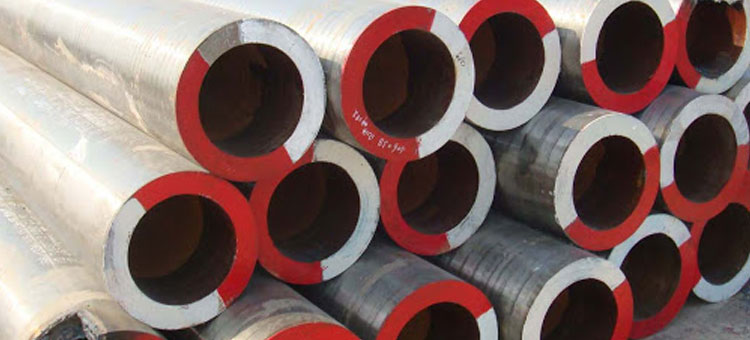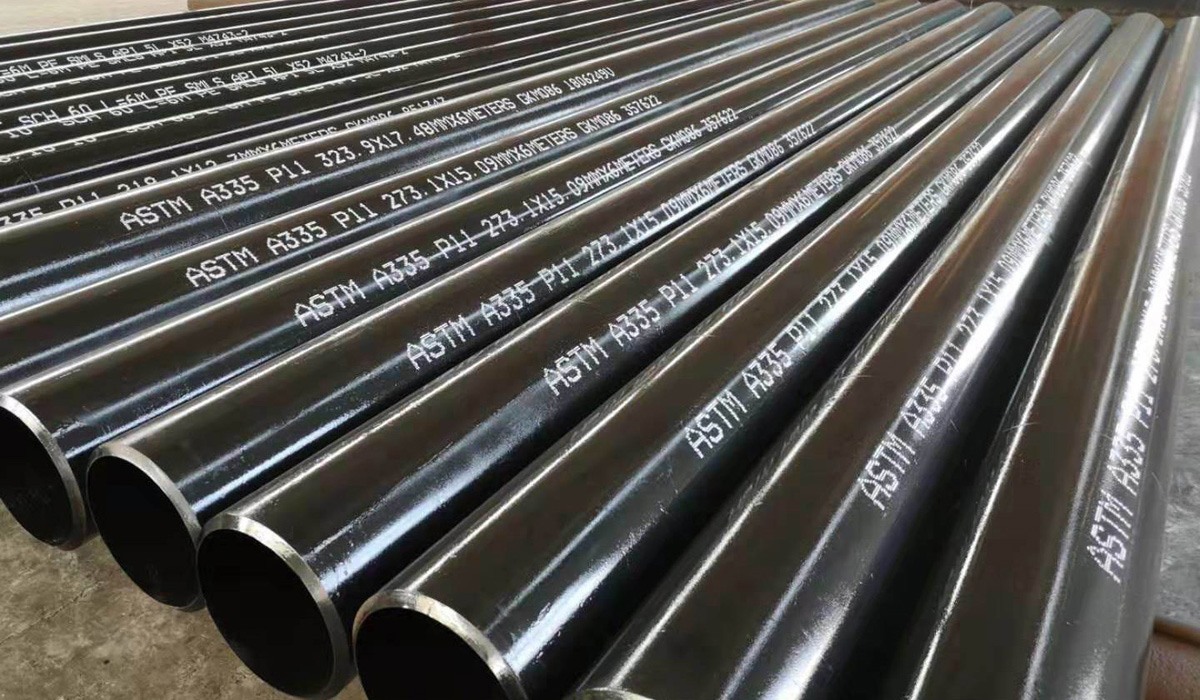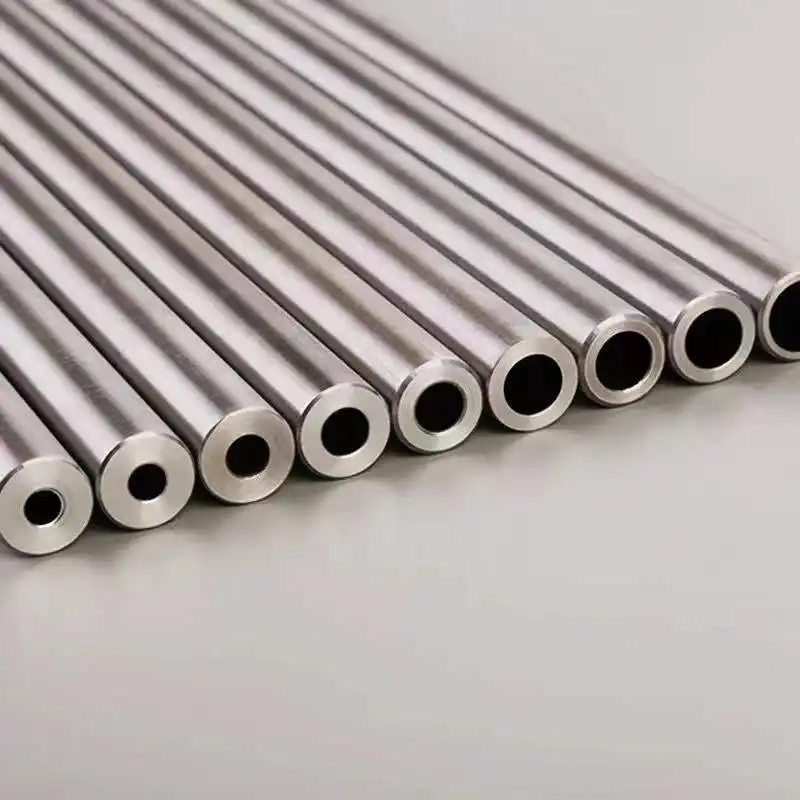Heavy Thick Steel Pipe

Heavy Thick Steel Pipes: Technical Overview
1. Definition & Core Properties
Heavy thick steel pipes are characterized by a high wall thickness-to-diameter ratio, designed to withstand extreme pressures, mechanical stress, and corrosive environments. These pipes are critical in industries requiring structural integrity under harsh conditions, such as oil and gas, nuclear energy, and infrastructure development12.
2. Materials & Manufacturing
-
Common Materials:
- Carbon Steel: Widely used for its durability and cost-effectiveness in applications like hydraulic systems and structural supports2.
- Alloy Steel: High-strength alloys (e.g., API 5L X70) enhance resistance to corrosion and mechanical wear in subsea or high-temperature environments13.
- Duplex Stainless Steel: Combines strength and corrosion resistance, ideal for offshore pipelines exposed to saline conditions14.
-
Manufacturing Processes:
- Seamless Pipes: Produced via extrusion or rotary piercing, offering uniform wall thickness and superior pressure resistance12.
- Welded Pipes: Used for cost-sensitive applications, though residual stresses (e.g., up to 660 MPa longitudinal stress in 80mm-thick welds) require post-weld heat treatment to ensure structural stability4.
Heavy Wall Pipes Specification
| Packing | Standard package, plastic caps, anti-rust oil, Beveled ends |
| Application | Oil and casing Pipe; Pressure Vessel Pipe; Hydralic Pillar used Pipe; Automobile Pipe; War industry Pipe |
| Outer Diameter Size in Inch | 3/4”To 48” Wall Thickness: SCH120, SCH160, and XXS |
| Standard | ASTM, JIS, DIN, GB, API, ANSI |
| Material | ASTM 106/A53 Grade B API5L Grade B X52 X42 X70 X6020G, 40MnB, 20MnVB, 50CrV, 27SiMn, 40Cr, 12CrNi3, 12Cr2Ni4, 25MnG, 30CrMnSi, 45Cr, 12Cr1MoV, 50Cr, 20Cr, 35CrMo, 20#, 42CrMo, 38CrMoAL, 20CrMnSi, 12CrNi2, 20G, 20CrMo, 20MnG, 20A, 38CrSi, 45#, 45Mn2, 35CrMnSi, 45CrNiMoVA, 30CrMnTi, 30Cr, 40CrNiMoA, 20CrMnTi, 40Mn2, 35#, 12CrMoG, 12CrMoV, 12CrMo, 35Cr |
| Quality | API 5L , ISO, DNV |
| Pipe Marking | All Pipe are marked as follows: Supplier or Manufacturer’s Name, Standard, Grade, OD, Thickness, Length, Heat Number |
3. Key Applications
- Oil & Gas:
- High-pressure gas pipelines (e.g., ≥100 psig operating pressure) and offshore drilling risers23.
- Subsea pipelines (e.g., duplex steel with 25mm wall thickness) resistant to seawater corrosion14.
- Infrastructure:
- Structural columns for skyscrapers and bridges, utilizing carbon steel pipes with wall thicknesses up to 40mm12.
- Nuclear Energy:
- Steam transmission systems in reactors, requiring alloy steel pipes to withstand temperatures exceeding 600°C24.
4. Case Study: Anti-Dumping Tariffs
In 2008, the U.S. imposed heavy anti-dumping and anti-subsidy duties on Chinese-made circular welded carbon-quality steel pipes, citing unfair pricing and subsidies. These pipes, primarily used in HVAC systems, faced tariffs to protect domestic industries from market distortions3.
5. Future Trends
- Residual Stress Management: Advanced techniques like neutron diffraction and contour methods are being adopted to analyze and mitigate stresses in thick-walled welds4.
- Material Innovations: Development of ultra-high-strength steels (UHSS) for deeper oil exploration and extreme environments14.
Technical Specifications Table
| Parameter | Details | Sources |
|---|---|---|
| Operating Pressure | ≥100 psig (steel pipes) vs. low-pressure alternatives (e.g., HDPE, PVC)2 | |
| Residual Stress in Welds | Up to 660 MPa longitudinal stress in 80mm-thick welds4 | |
| Subsea Pipeline Example | Duplex steel (OD 323.9mm, wall thickness 25mm)1 | |
Heavy Thick Steel Pipes: Key Parameter Tables
1. General Specifications
| Outer Diameter (mm) | Wall Thickness (mm) | Material Standards | Typical Applications |
|---|---|---|---|
| 10–478 | 2–6 | GB/T 8163 | Structural supports, low-pressure fluid transport 12 |
| 406–864 | 16–200 | ASTM A106/A53 | Subsea oil/gas pipelines, ultra-high-pressure equipment 26 |
| 219–630 | 4.8–150 | API 5L X70 | High-pressure oil/gas transmission 12 |
2. Chinese National Standards (GB) for Seamless Pipes
| Outer Diameter (mm) | Standard Wall Thickness (mm) | Allowable Pressure (MPa) | Material Examples |
|---|---|---|---|
| 32–159 | 2.5–6 | 10–25 | 20# Carbon Steel, 16Mn Alloy Steel 27 |
| 219–426 | 6–40 | 25–45 | Q345B Low-Alloy Steel 17 |
| 500–900 | 40–60 | ≥60 | SA335 P91 High-Temperature Alloy 27 |
3. ASME Wall Thickness Comparison
| Nominal Diameter (NPS) | Schedule | Outer Diameter (mm) | Wall Thickness Range (mm) |
|---|---|---|---|
| 1/2″–24″ | SCH40–SCH160 | 21.3–609.6 | 2.11–40.9 |
| 24″–48″ | SCH20–SCHXXS | 610–1219 | 6.35–100 |
Note: Wall thickness calculation formula:
Wall Thickness=p⋅D02([σ]t⋅ϕ+p)Wall Thickness=2([σ]t⋅ϕ+p)p⋅D0
where pp = design pressure, D0D0 = outer diameter, [σ]t[σ]t = allowable stress, ϕϕ = weld factor (1 for seamless pipes) 45.
4. Large-Diameter Thick-Walled Seamless Pipes
| Outer Diameter (mm) | Wall Thickness (mm) | Weight per Meter (kg/m) | Material |
|---|---|---|---|
| 508 | 80 | 785 | SA790 S32750 Duplex Stainless Steel 6 |
| 660 | 100 | 1,320 | API 5L X80 Pipeline Steel 26 |
| 820 | 150 | 2,450 | ASTM A335 P11 Alloy Steel 27 |
5. Material vs. Pressure Ratings
| Material Type | Allowable Stress (MPa) | Max. Working Pressure (MPa) | Standards |
|---|---|---|---|
| Carbon Steel (20#) | 120–150 | 25 | GB/T 8163 27 |
| Duplex Stainless Steel (SA790) | 450–550 | 60 | ASTM A790 46 |
| High-Temp Alloy (P91) | 650–800 | 100 | ASME B16.11 47 |
Key Notes
- Wall Thickness Tolerance: ±10% for seamless pipes; ±5% for precision cold-drawn pipes 27.
- Pressure-Wall Thickness Relationship: For the same outer diameter, a 10 MPa increase in design pressure requires a 15%–20% increase in wall thickness 45.
- Weight Calculation:
Weight (kg/m)=(OD−Wall Thickness)×Wall Thickness×0.024661,000Weight (kg/m)=1,000(OD−Wall Thickness)×Wall Thickness×0.02466
For carbon/alloy steel; multiply by 1.02 for stainless steel 12.
This synthesis integrates technical standards (GB, ASME) and industrial practices for applications ranging from structural components to ultra-high-pressure systems










